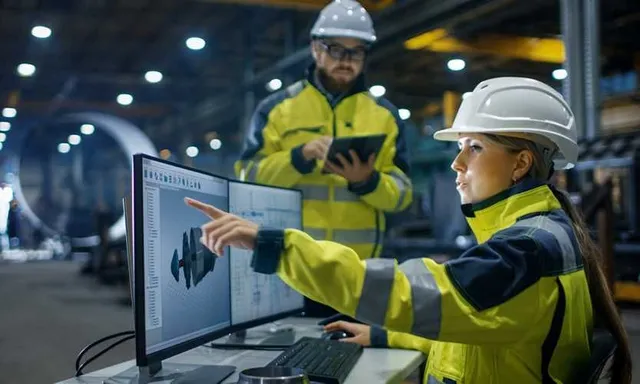In 2024, workplace safety continues to be a paramount concern for businesses across all industries. Ensuring a safe work environment not only protects employees but also enhances productivity and morale. Innovative solutions are increasingly being adopted to create safer workspaces. This blog will explore some of the latest trends and technologies that are shaping safer work environments in 2024, and the role of Health & safety services in implementing these solutions.
1. Wearable Technology
Wearable technology has revolutionised the way we monitor and manage workplace safety. Devices such as smartwatches, fitness trackers, and specialised safety wearables provide real-time data on an employee’s physical condition and environmental factors. These devices can monitor heart rates, detect falls, and even alert workers to hazardous conditions like excessive heat or toxic gases. This real-time monitoring helps in preventing accidents and health issues before they become critical.
2. AI and Machine Learning
Artificial intelligence (AI) and machine learning are being leveraged to predict and prevent workplace accidents. By analysing vast amounts of data from various sources, AI can identify patterns and predict potential hazards. This allows companies to take proactive measures to mitigate risks. Machine learning algorithms can also be used to improve safety training programs by tailoring content to the specific needs and behaviours of employees.
3. Virtual Reality (VR) Training
Virtual reality has become a powerful tool for safety training. VR simulations provide immersive training experiences that replicate real-world scenarios without the associated risks. Employees can practise responding to emergencies, handling dangerous equipment, and navigating hazardous environments in a controlled and safe virtual space. This type of training enhances learning retention and prepares employees better for actual situations.
4. Drones for Safety Inspections
Drones are increasingly used for safety inspections in industries like construction, mining, and oil and gas. These unmanned aerial vehicles can access hard-to-reach areas and provide high-resolution images and videos for detailed inspections. Drones reduce the need for workers to be exposed to hazardous conditions during inspections and maintenance activities, significantly enhancing overall safety.
5. IoT-Enabled Safety Systems
The Internet of Things (IoT) has enabled the development of interconnected safety systems that provide comprehensive monitoring and control. IoT-enabled sensors can detect smoke, gas leaks, structural weaknesses, and other hazards in real time. These sensors can be integrated into a centralised safety management system, allowing for immediate response and coordination during emergencies.
6. Robust Health & Safety Services
Innovative solutions are only effective when integrated into a comprehensive safety management strategy. Professional Health & safety services are essential for implementing and maintaining these advanced safety measures. These services provide expert guidance on compliance, risk assessments, safety training, and the development of safety policies tailored to specific industry needs.
Benefits of Professional Health & Safety Services:
- Expertise and Knowledge: Health & safety service providers bring a wealth of experience and up-to-date knowledge on the latest safety regulations and best practices.
- Customised Solutions: These services offer tailored safety strategies that address the unique challenges and risks of different work environments.
- Continuous Improvement: Professional services ensure ongoing monitoring and improvement of safety measures, adapting to new risks and technological advancements.
- Employee Engagement: Engaging employees in safety initiatives and training programs fosters a culture of safety and empowers workers to take an active role in maintaining a safe workplace.
Conclusion
As we move further into
2024, the importance of creating safer work environments cannot be overstated. The integration of innovative technologies such as wearable devices, AI, VR training, drones, and IoT-enabled systems is transforming how businesses approach workplace safety. These advancements not only prevent accidents and injuries but also contribute to a culture of safety and well-being among employees.
However, the successful implementation of these technologies requires a comprehensive and strategic approach. This is where professional Health & safety services come into play. These services provide the necessary expertise, tailored solutions, and continuous support to ensure that safety measures are effective and up to date.
In conclusion, investing in innovative safety solutions and leveraging the expertise of health and safety services are crucial steps towards building safer and more efficient work environments in 2024. By prioritising safety, businesses can protect their most valuable asset – their employees – and foster a productive, positive, and compliant workplace.



